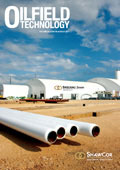Editorial comment
Post-Fukushima, many governments have found themselves in a quandary. There is a palpable sense that the near meltdown of the nuclear reactor in Japan was a game-changing event that spelt the end of the fledgling ‘nuclear renaissance’. However, in real terms, governments are faced with very few alternatives to low carbon nuclear energy.
Register for free »
Get started now for absolutely FREE, no credit card required.
Certainly there has been a strong negative reaction to nuclear power. In Japan, only 19 of the 54 reactors in service prior to the tsunami and resulting nuclear disaster are still in service. This is largely due to public opposition and a widely held fear of further seismic activity causing further catastrophe. This anti-nuclear sentiment is not only confined to Japan. Germany’s chancellor, Angela Merkel, has announced that the country will close all of its nuclear facilities by 2022, a full 14 years ahead of their planned closure in 2036, starting with 8.5 GW or 8% of the country’s electricity production this year alone. Instead, the country has committed itself to a full scale ‘energy switch’ to alternative and sustainable energy sources.
Even France, which currently derives 80% of its electricity from nuclear power, has indicated that in future it will favour a more balanced energy mix incorporating wind, solar and other renewable energies. However, according to consultants Arthur D Little and recent reports in The Financial Times, despite the Fukushima disaster, the actual effect on the nuclear industry has been comparatively small with only 37 of the 570 nuclear units earmarked globally for construction prior to the Fukushima disaster being axed. Countries such as China, South Korea, India and Russia that each have an urgent need for energy expansion, are marching ahead with their nuclear programmes. The reality is that renewable energy cannot compete with nuclear or fossil fuels as a dependable provider of baseload electricity.
The good news for our industry is that natural gas is emerging as a clear winner in this new era. For starters, it is the cleanest fossil fuel, but just as importantly for those countries wishing to cut back on existing nuclear power generation, it is a reliable and proven alternative. What is more is that thanks to the development of an extensive global LNG infrastructure, which has accelerated over the course of the last decade and recent developments in shale gas technology, gas is a resource in considerable abundance at this key moment.
Nowhere is this more apparent than in Australia, where LNG development, in anticipation of huge demand across the Asia-Pacific region, is progressing at breakneck speed. Gorgon LNG is the largest project currently under development and is expected to produce first gas in 2014 following an overall investment of US$ 45.5 billion. However, with the Australian industry planning to increase production of LNG over the coming years from its current 15 million to 70 million tpy this is by no means the only project in planning or under construction. But with demand for natural gas in China expected to increase by over 5% a year between now and 2035, Australia looks to be in the enviable position of having both the resource and the market in which to monetise its vast gas reserves.
Whilst the Fukushima disaster may not prove to be the final the straw for the nuclear industry that many feared in its immediate aftermath, it will certainly prove to be a tremendous opportunity for the natural gas industry, which looks set to provide the bridge between fossil fuels and renewable energy for many years to come.


